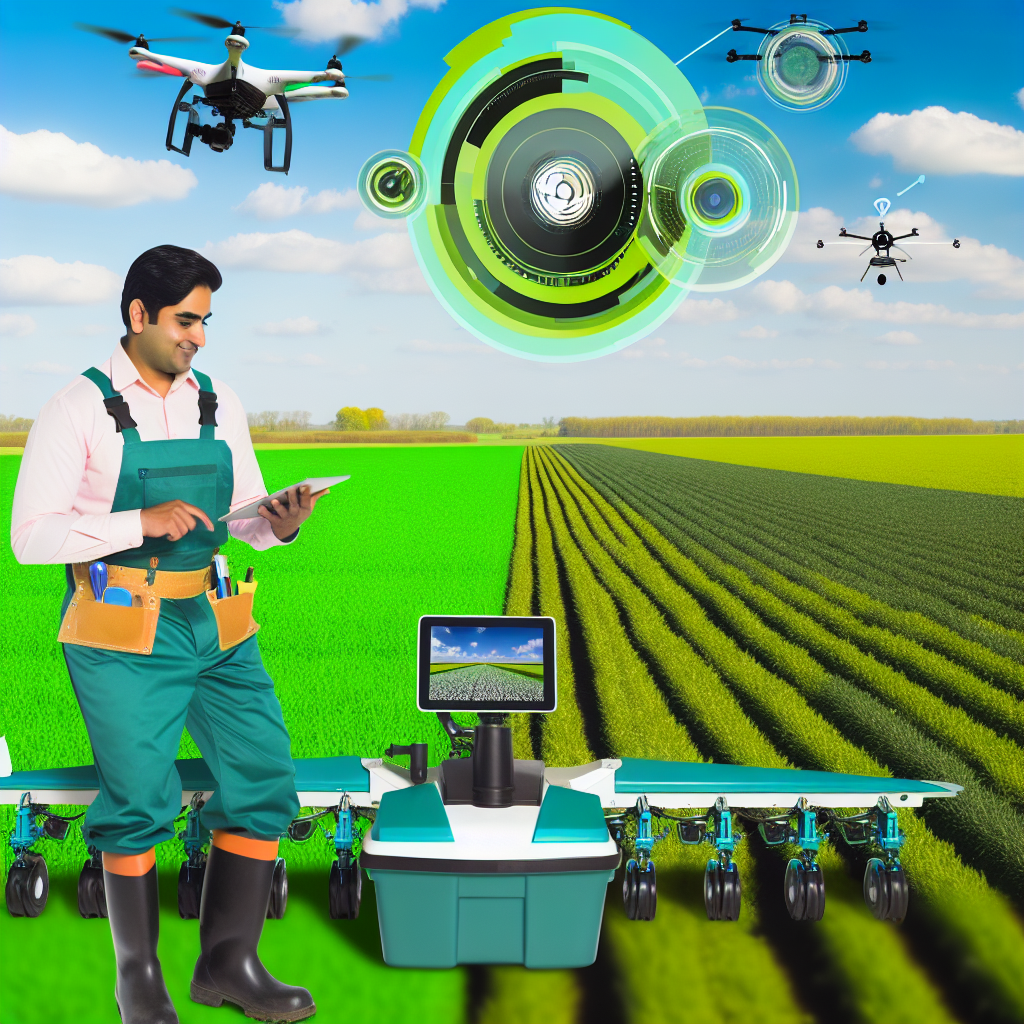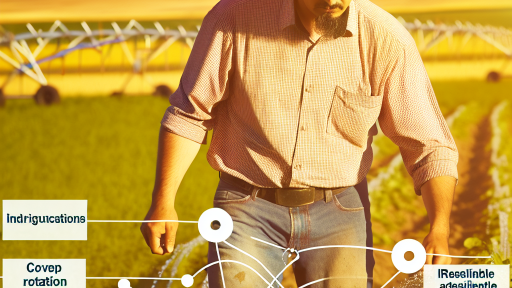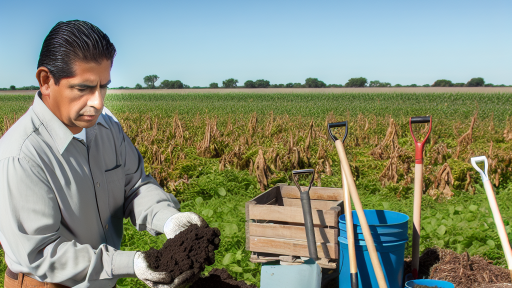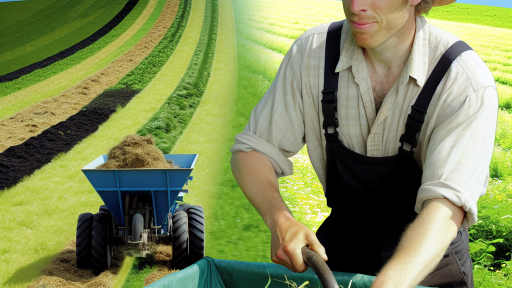Introduction to Precision Agriculture and its Importance in Emission Control
Precision agriculture transforms how farmers manage their resources.
This approach incorporates technology to enhance farming practices.
By utilizing data analysis, farmers can optimize crop production.
Additionally, precision agriculture significantly reduces emissions.
It addresses environmental concerns related to traditional farming.
Understanding Precision Agriculture
Precision agriculture relies on information technology and satellite imagery.
This enables farmers to monitor their fields continuously.
It allows for detailed analysis of soil and crop conditions.
Farmers can make informed decisions based on real-time data.
Environmental Benefits
One of the primary advantages is reduced fertilizer usage.
This decreases the potential runoff into nearby waterways.
Moreover, precision techniques can minimize pesticide applications.
Consequently, these practices lead to healthier ecosystems.
Emission Reduction Strategies
Farmers employ several strategies to achieve emission control.
- Utilizing GPS technology for accurate planting.
- Implementing drip irrigation systems to conserve water.
- Using sensors to monitor crop health and nutrient needs.
These methods not only enhance productivity but also lower carbon footprints.
Transform Your Agribusiness
Unlock your farm's potential with expert advice tailored to your needs. Get actionable steps that drive real results.
Get StartedThe Role of Technology
Technology plays a pivotal role in precision agriculture.
Drones deliver critical aerial imagery of crop conditions.
Additionally, automated machinery reduces labor and enhances efficiency.
These innovations ultimately lead to sustainable farming practices.
Collaboration and Research
Collaboration between farmers and researchers is essential.
It fosters the development of new techniques for emission control.
Furthermore, sharing data helps create improved farming guidelines.
These partnerships pave the way for innovative agricultural solutions.
Overview of Emission Sources in Agriculture
Identifying Major Emission Sources
Agricultural activities contribute significantly to greenhouse gas emissions.
These emissions primarily originate from livestock, land management, and fertilizers.
Livestock production produces methane and nitrous oxide, potent greenhouse gases.
Land use changes release carbon dioxide from soils and vegetation.
Fertilizers lead to nitrous oxide emissions during application and decomposition.
The Role of Land Management Practices
Land management directly influences emissions levels in farming.
Conventional tillage methods often increase carbon release from soils.
No-till farming reduces emissions by preserving soil structure.
Crop rotation can enhance soil health and reduce dependency on fertilizers.
Emissions Related to Fertilizer Use
Fertilizer application is a major source of agricultural emissions.
Excessive use leads to increased nitrous oxide emissions into the atmosphere.
Choosing the right fertilizers can mitigate these emissions.
Slow-release fertilizers can help minimize environmental impact.
Impact of Livestock on Emissions
Livestock is a significant contributor to methane emissions.
Cows and sheep produce methane through digestion and manure management.
Implementing better grazing techniques can help reduce these emissions.
Showcase Your Farming Business
Publish your professional farming services profile on our blog for a one-time fee of $200 and reach a dedicated audience of farmers and agribusiness owners.
Publish Your ProfileFeeding livestock a balanced diet also contributes to lower emissions.
Future Trends and Research
Research is underway to develop sustainable agricultural practices.
Precision agriculture technologies can improve efficiency and reduce emissions.
Monitoring systems help farmers understand and manage their emissions better.
Investment in innovative techniques is vital for emission reduction.
Key Technologies Utilized in Precision Agriculture for Monitoring Emissions
Remote Sensing Technologies
Remote sensing offers an overview of large agricultural areas.
It uses satellites and drones to capture data.
This technology measures variables like soil moisture and crop health.
Farmers analyze these data to assess where emissions might occur.
Consequently, this approach helps in identifying areas needing attention.
Soi l Sensors
Soil sensors provide real-time data about soil conditions.
They measure moisture, nutrient levels, and pH balance.
This information allows farmers to apply fertilizers more effectively.
As a result, they minimize excess emissions from chemical runoff.
Moreover, these sensors enhance targeted irrigation practices.
Yield Monitoring Systems
Yield monitoring systems track crop outputs in real time.
They use GPS technology for precise data collection.
This data helps identify variations in field productivity.
By analyzing yields, farmers can adjust their practices accordingly.
This adjustment reduces inefficiencies and unnecessary emissions.
Data Management Software
Data management software integrates various data sources.
Farmers utilize this software to analyze trends and patterns.
It aids in making informed decisions regarding emissions control.
Additionally, the software helps in documenting compliance with regulations.
This documentation supports transparency and accountability in farming.
Precision Application Technologies
Precision application tools ensure accurate delivery of inputs.
These tools include variable rate applicators for fertilizers and pesticides.
Farmers customize application rates based on field conditions.
This custom approach reduces waste and limits greenhouse gas emissions.
Consequently, it enhances both crop yields and environmental sustainability.
Explore Further: How No-Till Farming Contributes to Carbon Sequestration
Data Collection Techniques for Emission Control
Sensors
Sensors play a crucial role in monitoring emissions.
They gather real-time data from various sources.
For example, soil sensors measure nutrient levels.
These devices help in tracking fertilizer application.
Moreover, air quality sensors monitor atmospheric pollutants.
They provide valuable insights into emission sources.
Thus, timely data from sensors improves decision-making.
Drones
Drones offer unique advantages for emission control.
They can cover large agricultural areas efficiently.
Showcase Your Farming Business
Publish your professional farming services profile on our blog for a one-time fee of $200 and reach a dedicated audience of farmers and agribusiness owners.
Publish Your ProfileEquipped with sensors, drones capture aerial imagery.
This imagery aids in evaluating crop health.
Additionally, drones can identify problem areas quickly.
Farmers use this data to apply targeted interventions.
Consequently, drones significantly enhance emission management efforts.
Satellites
Satellites provide a broad perspective on emissions.
They track changes over large geographic areas.
Remote sensing technology gathers critical data.
Satellite imagery helps monitor land use changes.
This information is vital for effective environmental management.
Furthermore, satellites can detect atmospheric changes.
Thus, they contribute to understanding emission sources.
Integrating Technology for Better Emission Control
Combining sensors, drones, and satellites enhances data accuracy.
Each technology fills specific data collection gaps.
Integrative approaches provide comprehensive insights.
This synergy allows for more strategic planning.
As a result, farmers can reduce emissions effectively.
You Might Also Like: Renewable Energy Solutions for Sustainable Farming
Case Studies: Successful Implementation of Precision Agriculture in Emission Reduction
Utilizing Drones for Crop Monitoring
Drones have revolutionized crop monitoring techniques across various farms.
Agronomist Evelyn Thompson implemented a drone system at Green Valley Farms.
This system provided real-time data on crop health and soil conditions.
Consequently, Evelyn could target areas needing specific nutrient applications.
As a result, the farm reduced fertilizer use by 30%.
Precision Irrigation Systems
Precision irrigation systems optimize water usage in agricultural practices.
At Oakwood Orchards, they installed a smart irrigation system powered by real-time weather data.
This innovative approach reduced water consumption significantly.
The plantation reported a 40% decrease in water usage over two seasons.
Soy Health Monitoring Using Sensors
Soil health sensors offer valuable data for better land management.
Agriculturalist Lucas Martinez adopted this technology at Hilltop Farms.
He monitored soil moisture levels and nutrient content continuously.
With the insights gained, Lucas tailored his soil amendment practices.
This practice led to a 25% reduction in nitrogen runoff.
Integration of Crop Rotation and Data Analytics
Effective use of crop rotation can significantly minimize emissions.
Farmer Maya Rodriguez implemented data analytics to optimize her crop rotation strategy.
She analyzed historical yield data to determine the best crop combinations.
This adaptation improved soil health and reduced pesticide usage by 20%.
Use of Biodegradable Inputs
Many farmers are turning to biodegradable inputs to reduce pollution.
At Evergreen Fields, proprietor Jack Wilson shifted to biodegradable weed control products.
This decision minimized chemical use, promoting healthier ecosystems.
Consequently, Jack noticed an improvement in biodiversity on his farm.
Showcase Your Farming Business
Publish your professional farming services profile on our blog for a one-time fee of $200 and reach a dedicated audience of farmers and agribusiness owners.
Publish Your ProfileBenefits of Collaboration and Knowledge Sharing
Collaboration among farmers fosters innovation in emission reduction practices.
The Green Initiative Network encourages local farmers to share resources and knowledge.
Participating farms have collectively reduced greenhouse gas emissions by 15%.
This network has further strengthened community ties within the agricultural sector.
Learn More: Enhancing Soil Health through Carbon Sequestration

Regulatory Framework and Incentives for Farmers Using Precision Agriculture
Understanding Regulatory Frameworks
Regulatory frameworks shape the adoption of precision agriculture technologies.
They promote sustainable practices to mitigate environmental impacts.
Governments establish guidelines that ensure safe and effective use of these technologies.
For instance, agencies like the Environmental Protection Agency (EPA) influence agricultural practices.
Compliance with regulations often leads to improved environmental performance.
Incentives Offered to Farmers
Farmers can access various incentives when adopting precision agriculture.
These incentives may include tax breaks and subsidies for technology investments.
Additionally, grants are available for implementing innovative farming practices.
For example, the USDA offers programs to encourage sustainable farming methods.
Farmers implementing these practices can also enjoy reduced operational costs.
Benefits of Compliance with Regulations
Compliance with agricultural regulations provides several advantages.
For one, it enhances farmers’ reputations within the local communities.
Moreover, compliant practices contribute to healthier ecosystems.
Farmers may also experience increased market access due to compliance.
Regulated operations can attract environmentally-conscious consumers.
Case Studies of Successful Implementation
Several farmers have excelled through precision agriculture compliance.
One notable example is Sarah Green, who reduced emissions significantly.
Her farm utilized GPS technology to optimize fertilizer applications.
This approach not only complied with regulations but also increased yields.
Such success stories inspire others to adopt similar practices.
Challenges in Regulatory Compliance
Despite benefits, farmers face challenges in regulatory compliance.
Understanding complex regulations can be daunting for many.
Moreover, the initial cost of precision agriculture technologies can be high.
Training and support are crucial to help farmers navigate these challenges.
Communities and agricultural organizations can offer valuable resources.
Future Directions in Precision Agriculture Regulation
The future of precision agriculture regulation looks promising.
As technology advances, regulations will likely evolve to keep pace.
Innovation will play a key role in shaping sustainable farming practices.
Collaboration between farmers and policymakers will be essential.
Ultimately, these efforts will foster a healthier agricultural environment.
See Related Content: How Farmers Are Battling Heatwaves and Drought with Innovation
Challenges and Limitations of Precision Agriculture in Emission Control
Technological Barriers
Precision agriculture relies heavily on advanced technology.
Farmers may face high costs when adopting these technologies.
Additionally, some areas lack adequate digital infrastructure.
This limitation can hinder access to essential data.
Showcase Your Farming Business
Publish your professional farming services profile on our blog for a one-time fee of $200 and reach a dedicated audience of farmers and agribusiness owners.
Publish Your ProfileMoreover, varying levels of tech literacy can pose challenges.
Data Management Issues
Effective emission control requires robust data management.
Farmers often collect vast amounts of data.
However, they might struggle to analyze this information efficiently.
Inconsistent data formats can exacerbate these issues.
Furthermore, data integration across platforms remains a significant hurdle.
Economic Constraints
Adopting precision agriculture can strain financial resources.
Smaller farms may find the investment particularly challenging.
This situation creates a disparity in emission control effectiveness.
Additionally, fluctuating market conditions can affect long-term planning.
Regulatory Challenges
The regulatory landscape for precision agriculture is complex.
Farmers must navigate various laws and guidelines.
Compliance can be resource-intensive and confusing.
Moreover, inconsistent regulations across regions can complicate efforts.
Environmental Variability
The effectiveness of precision agriculture differs by location.
Environmental factors greatly influence agricultural practices.
These factors include soil types, climate, and topography.
Consequently, solutions may not be universally applicable.
Socio-Cultural Factors
Cultural perceptions of farming technology can impact adoption rates.
Some communities remain skeptical about modern practices.
This skepticism can slow the transition to sustainable methods.
Additionally, traditional farming practices are deeply rooted.
Therefore, changing these beliefs requires time and education.
Future Trends: Innovations in Precision Agriculture for Sustainable Emission Management
Embracing Advanced Technologies
Precision agriculture increasingly utilizes advanced technologies to manage emissions effectively.
Farmers now leverage drones for aerial imaging and data collection.
These drones provide real-time insights into crop health and soil conditions.
Moreover, satellite technology enhances data accuracy across large landscapes.
This integration allows farmers to apply resources more efficiently.
Additionally, machine learning offers predictive analytics for better decision-making.
Enhanced Data Analytics
Data analytics plays a vital role in emission control within agriculture.
Farmers collect vast amounts of data from various sources.
Analyzing this data reveals patterns that inform better agricultural practices.
Precision metrics help optimize fertilizer use, thus reducing emissions.
As a result, farmers achieve higher yields with minimal environmental impact.
Soil Health Management
Soil health significantly influences emission levels in farming.
Practices such as cover cropping enhance soil structure and fertility.
Healthy soil captures more carbon, naturally reducing greenhouse gas emissions.
Moreover, regular soil testing determines nutrient needs accurately.
This data-driven approach minimizes over-fertilization and related emissions.
Smart Irrigation Techniques
Innovation in irrigation systems is crucial for emission reduction.
Showcase Your Farming Business
Publish your professional farming services profile on our blog for a one-time fee of $200 and reach a dedicated audience of farmers and agribusiness owners.
Publish Your ProfileFarmers are adopting smart irrigation technologies that optimize water usage.
For instance, moisture sensors measure soil moisture levels in real time.
This technology triggers irrigation only when necessary, conserving water and energy.
Ultimately, these methods lead to a decrease in the overall carbon footprint.
Integration of Renewable Energy Sources
Renewable energy sources are becoming more prevalent in precision agriculture.
Solar panels and wind turbines power various farming operations.
By harnessing these resources, farms reduce their reliance on fossil fuels.
This shift helps cut emissions significantly and fosters energy independence.
Furthermore, integrating bioenergy systems provides additional opportunities for sustainability.
Collaboration and Knowledge Sharing
Collaboration among stakeholders is essential for advancing precision agriculture.
Farmers, researchers, and tech companies must work together to innovate.
Sharing best practices enhances knowledge and drives collective action.
Conferences and workshops facilitate the exchange of ideas and technologies.
Ultimately, these collaborations result in effective emission management strategies.
Additional Resources
USDA Science and Research Strategy, 2023-2026: Cultivating …
The Environmental Benefits of Precision Agriculture Quantified …




